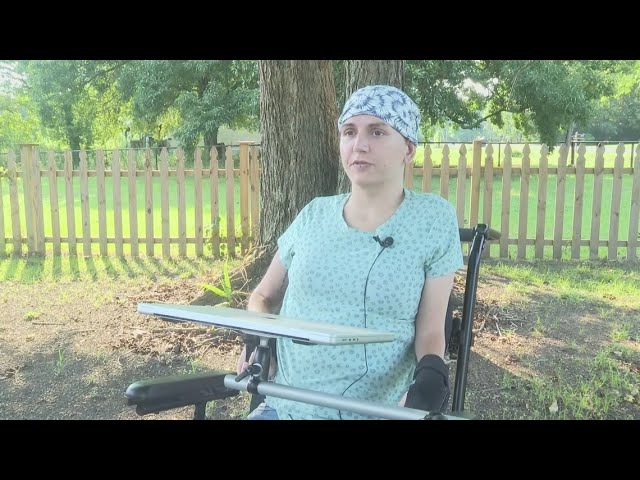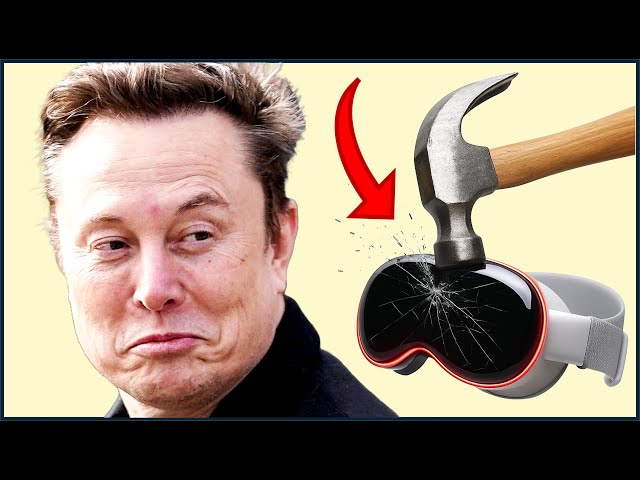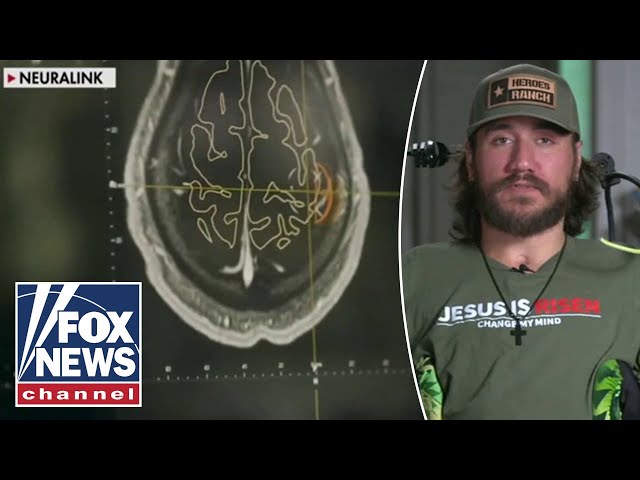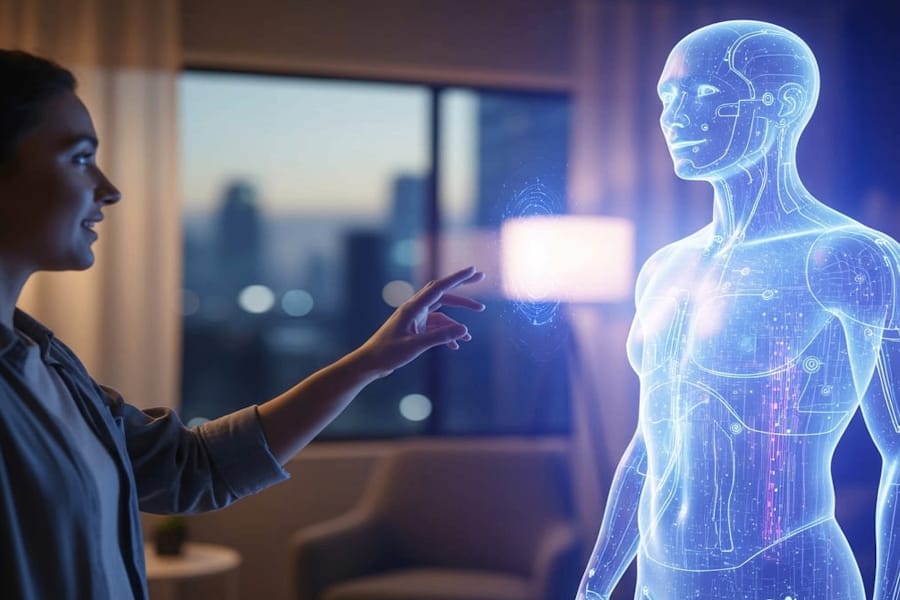Type: Article -> Category: AI Healthcare
Neuralink: The Awe-Inspiring and Terrifying Future of Human-Machine Integration

Publish Date: Last Updated: 10th November 2025
Author: nick smith- With the help of CHATGPT
Neuralink: A 2025 Perspective on Brain Implants, Hype & Hazard
The dream of a brain-computer interface (BCI) has long excited visionaries. Elon Musk’s Neuralink has for years promised “cybernetic superpowers.” As of mid-2025, that dream is inching closer to reality—but it remains a deeply ambivalent frontier, full of both promise and peril.
What Is Neuralink?
Neuralink, founded by Elon Musk in 2016, aims to create a direct interface between the human brain and computers. The core technology is a small, implantable device called the "Link," which is designed to interact with neurons and transmit information directly to and from the brain. This brain-machine interface (BMI) could enable users to control devices, communicate with others, and even enhance their cognitive abilities through thought alone.
Recent developments have shown just how far this technology has come. Musk's vision for Neuralink includes treating neurological conditions such as epilepsy and paralysis, and even allowing amputees to control prosthetic limbs with unprecedented speed and precision. In July 2024, Musk announced that Neuralink was preparing to implant its experimental brain chip into a second human patient, despite setbacks with the first trial. This ambitious move signals the company's intent to push the boundaries of what is possible with BMIs.
The Astonishing Potential of Neuralink
Neuralink's potential benefits are profound, particularly in the field of medicine. For individuals suffering from severe neurological disorders, Neuralink could offer new hope. The device might restore movement to paralyzed limbs, treat epilepsy by directly regulating brain activity, or even provide "blindsight" to those who have lost their vision. These possibilities could transform the lives of millions of people around the world.
Beyond medical applications, Neuralink could also lead to the development of cybernetic enhancements. Musk has suggested that in the future, Neuralink users could control robots with their minds, including Tesla's humanoid robot, Optimus. This could give rise to entirely new forms of human-computer interaction, where thought alone is enough to manipulate the physical world.
Musk's predictions extend even further, envisioning a future where humans can merge with AI, effectively enhancing our brains to keep pace with rapidly advancing technologies. The implications are staggering: faster learning, enhanced memory, and even telepathic communication could become possible.
The Terrifying Risks of Neuralink
However, the potential dangers of Neuralink are equally significant. One of the most alarming prospects is the risk of brain hacking. Just as traditional computers are vulnerable to cyberattacks, so too could the human brain become a target if Neuralink devices are compromised. The idea of millions of minds being controlled or manipulated by malicious actors is a dystopian nightmare that could have devastating consequences for individuals and societies.
Additionally, the technology could exacerbate existing social inequalities. As Musk himself acknowledges, those who opt to enhance their cognitive abilities with Neuralink will have a significant advantage over those who do not. This could create a new class divide, where the "enhanced" out-compete the "natural" in nearly every aspect of life, from employment to education. The pressure to adopt such technology might become overwhelming, leading to a future where people are forced to choose between upgrading their brains or being left behind.
Moreover, there are ethical concerns about the loss of free will and privacy. If companies or governments gain access to Neuralink data, they could influence thoughts, emotions, and behaviors in ways that are currently unimaginable. Advertisements could become inescapable, playing directly in a person's mind, while personal thoughts could be monitored or even controlled by external entities.
What Is Neuralink Doing Now (Sept 2025)?
Neuralink is developing an implantable device (the N1 “Link”) and a surgical robot (R1) to place ultra-fine electrode threads into the brain. These threads are intended to record neuron activity and wirelessly link brain signals to computers. Its current flagship product is known internally as Telepathy, aimed initially at restoring digital control (e.g. computer, smartphone) to people with paralysis. In parallel, Neuralink is developing Blindsight, a system to bypass damaged optic nerves and stimulate the visual cortex directly—a visible expansion into treating blindness.
The company has a Patient Registry to allow interested individuals to follow or enroll in future trials.
Milestones & Momentum
- Neuralink’s human trial, the PRIME Study, is underway to test safety and basic device function in participants with severe motor impairment.
- The first human implant took place in January 2024 (Noland Arbaugh).
- In August 2024, a second patient (“Alex”) was implanted.
- By mid-2025, Neuralink claims 12 people worldwide have received implants.
- In July 2025, the company performed two implants in one day (8th and 9th participants).
- The company intends to implant 20–30 more individuals in 2025 and is making upgrades to its hardware (more electrodes, better battery, higher bandwidth).
- A U.K. human trial was launched in July 2025 to test safety and functionality in up to seven participants.
- Neuralink joined a UCSB-led Smart Bionic Eye / Blindsight clinical effort, aiming for human visual implants in late 2025.
- The company secured $650 million in a Series E funding round in 2025 to scale up operations.
- Reports suggest Neuralink also obtained new funding valuing it at $9 billion.
- The Blindsight project has been awarded FDA Breakthrough Device status, supporting accelerated review.
- However, Neuralink’s attempts to trademark “Telepathy” and “Telekinesis” were rejected by the U.S. Patent & Trademark Office due to earlier filings by another party.
Neuralink publicly states that its users have racked up over 15,000 hours of implant use across more than 2,000 days in operation.
Why This Matters More Now (and Why Caution Still Rules)
The original article’s themes of hope and risk remain valid—but now they are more immediate.
Why it’s more real:
- Multiple human implants and sustained usage indicate we have moved beyond purely speculative research.
- Trials are expanding geographically (USA and U.K.).
- Vision restoration (Blindsight) is no longer just a far-future ambition—it’s under active development.
- Significant funding and investor interest provide the resources needed for deeper trials and scaling.
Why risks are sharper:
- The invasiveness of implanting electronics into the brain carries nontrivial risks: surgical complications, neural damage, inflammation, device failure, the challenge of safely removing or upgrading implants, and long-term biocompatibility.
- Regulatory approval pathways remain uncertain, especially for wide deployment or healthy users.
- Data privacy, hacking, and misuse are real threats — as more minds become instrumented, the consequences of breaches could be even more severe.
- Social inequality could widen if access to enhancements becomes stratified.
- The legal and IP challenges (e.g. trademark rejection) show that not all barriers are technical.
- As more surgeries are done, adverse events or negative outcomes may provoke public backlash or increased regulation.
A Balanced Conclusion
Neuralink in 2025 is no longer just a distant promise—it’s a company making concrete strides in human neurotechnology. The fact that dozens of implants may occur this year, and that expansion is planned globally, strengthens the case that brain-computer interfaces are entering a new phase.
Yet we must resist hype. The leap from enabling cursor control to telepathy for healthy individuals or merging with AI is immense, with steep technical, regulatory, and ethical hurdles. The dual nature of this technology remains: it has the power to heal, but also the power to disrupt or harm.
As Neuralink (and its competitors) move forward, the real test won’t just be whether the implants “work” in lab conditions—but whether society can govern them responsibly, equitably, and safely.
Neuralink on YouTube

Toronto doctors implant Canada's first Neuralink Brain Chip
YouTube Channel: CityNews

Louisiana woman makes history as first female Neuralink brain implant recipient
YouTube Channel: WWLTV

Why Neuralink Will Make The Apple Vision Pro Obsolete
YouTube Channel: Neura Pod – Neuralink

‘INCREDIBLE PRIVILEGE’: First Neuralink patient speaks out about brain implant
YouTube Channel: Fox News
Latest AI Articles
AI Questions and Answers section for Neuralink: The Awe-Inspiring and Terrifying Future of Human-Machine Integration
Welcome to a new feature where you can interact with our AI called Jeannie. You can ask her anything relating to this article. If this feature is available, you should see a small genie lamp above this text. Click on the lamp to start a chat or view the following questions that Jeannie has answered relating to Neuralink: The Awe-Inspiring and Terrifying Future of Human-Machine Integration.
Be the first to ask our Jeannie AI a question about this article
Look for the gold latern at the bottom right of your screen and click on it to enable Jeannie AI Chat.
Type: Article -> Category: AI Healthcare










